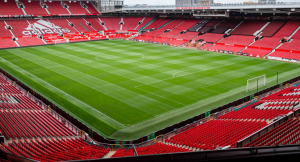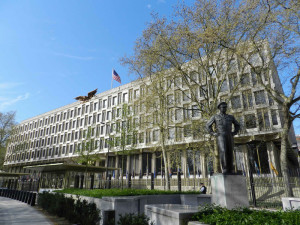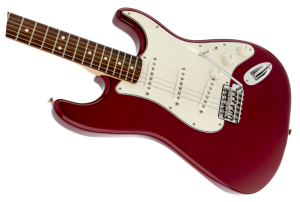“Lateral thinking is solving problems through an indirect and creative approach, using reasoning that is not immediately obvious and involving ideas that may not be obtainable by using only traditional step-by-step logic.”
In my last blog post I urged small business owners to break out of their comfort zone. One really good way to do that is to encourage everyone in the company – including you, the small business owner – to think outside the box – in your marketing efforts, your customer service, product development and manufacturing . . . in short, all areas of operation within the company.
Too often, when thinking turns to “but we’ve always done it this way”, growth expansion, efficiency, cost effectiveness, customer satisfaction, employee morale, you name it, might be suffering. You could very possibly gain tremendous new opportunities by thinking more laterally when deciding how to do something – to break out of your comfort zone.
While it’s usually easy to understand what thinking outside the box (or thinking laterally) is, it can be very hard to teach it. A few examples might help to illustrate ideas that can get the juices flowing.
Example #1 – Seminar venues. My own small software company presented hundreds of marketing seminars to introduce our software products to prospective customers. Our products were always difficult “technical sells”, meaning that we had to go to great lengths to convince the technical staff at large mainframe computer installations to (a) understand just how much they needed our products, and (b) push through a budget request for our product’s hefty prices. Almost always, our all-day marketing seminars were held in medium-large cities around the world, in hotel conference rooms, and if we could get 20 people to attend it was considered a success (and from that, getting one company to purchase was definitely a success). Oftentimes, though, we could barely get 8-10 people to attend, mainly because the potential attendees were extremely busy at work and couldn’t get away for a whole day.

Our sales guy for the U.K. was quite a lateral thinker, having set up many of our marketing seminars that drew three, maybe four attendees. (I’ll call him Brian, because that was his name.) After very low attendance at a northern England seminar in Manchester a year earlier, Brian approached me about booking a hospitality suite at the famous Old Trafford Stadium where Britain’s unofficial national team, Manchester United, plays. Brian is an avid soccer fan, and knowing that none of his customer contacts would have ever been invited to watch a soccer match from such an exalted spot as a hospitality suite, he figured it would double or triple the number of attendees.
This idea was way out of normal for our usual seminar venues, and was audacious (not to mention, quite a bit more expensive), but seeing the potential in it, I agreed. We had well over 30 attendees at the seminar, and it was one of the best lateral thinking marketing ideas we’d ever had.

Not long after, Brian suggested another novel idea – this time for a London seminar, where, inexplicably, we couldn’t get more than a half dozen seminar attendees. His idea? Hold it inside the U.S. Embassy in the heart of London’s Grosvenor Square. I’d never heard of a private company being allowed to present a marketing seminar in a U.S. Embassy, and thought it was not only a crazy idea, but totally impossible. Brian argued, that if we could pull it off, your everyday Brit would never see the inside of a major U.S. embassy, and would jump at this once-in-a-lifetime chance.
Brian proved right again. It took some extra organizing to get it approved, plus a few extra bucks over our normal hotel seminar venue. And, given 9/11 concerns, it also required a few extra security hoops to jump through (such as advance attendee lists for security vetting, lengthy shipping rules for getting our marketing materials inside, and strict rules on where people could/couldn’t go). But on seminar day we had well over 50 attendees, and amazingly, my seminar was introduced by the U.S. Trade Attaché and held in a posh amphitheater deep inside the embassy building.
Example #2 – Tradeshow giveaways. My small software company had an exhibitor booth at 5-6 tradeshows each year. They were one of our most expensive marketing events (surpassed only by the marketing seminars described above), costing at least $20,000 per tradeshow.
Now you’ve all probably attended a tradeshow or two, so you know the typical behavior – stroll around the exhibit hall aisles, identifying as far ahead of you as possible the booths that you know are of interest – and this is important – don’t make eye contact with anyone in a booth that you don’t know or care about – or at least, don’t think you care about and don’t want to stop at. To combat this, tradeshow vendors develop subtle tricks to lure aisle-walkers in – small giveaways (called a tchotchke in the trade), a raffle prize if you drop off your business card, a piece of candy (just for the taking), and sometimes they’ll station a person in the aisle to grab your attention.
We always had plenty of tchotchke’s to hand out, typically costing less than a dollar each. In our tradeshow world the typical attendance was 4,000-5,000, so we’d order a couple thousand giveaways, and it wouldn’t break the bank. The key to it was, select a novel tchotchke that someone might want to keep around on their desk or in a desk drawer, with our company name and web site address imprinted on it, and hopefully it would jangle memories when the show was in the past.
Then one time we were invited to a very large tradeshow – where 33,000 attendees were expected – and it immediately hit us – “what do we do about tchotchke’s?” At a dollar a pop, we’d have to order up $30,000+worth of giveaway “stuff”, and that was way out of our budget.

One day our VP of Sales and our Director of Marketing came to my office and pitched an idea – rather than cheap tchotchke’s for this tradeshow, how about promoting an end-of-show raffle for anyone giving us their business card? Their idea? Give away a candy apple red Fender Stratocaster electric guitar, complete with a tweed guitar case (the VP of Sales was an old rock and roll singer and guitar player from the 60’s, so this really twanged his heart strings). I allowed as to how this was one of the more stupid ideas I’d ever heard, but luckily, I calmed down and listened to their pitch. They explained that the guitar wouldn’t cost much more than $1,000, and the tweed case was just a few hundred – but I was still concerned about how many booth walk-by’s would have any interest.
I shouldn’t have worried. At most times, we had 6-deep crowds around our booth for the entire show – and when it came time for the raffle we had to scour the area for a big roller drum to do the drawing. It was easily the most successful tradeshow giveaway we ever did, and all because two people in my company had the guts to think laterally – or outside the box. (Next door to our booth, a large software company, Red Hat Software, was raffling off a Palm Pilot – which by then was very passé – and having collected a few hundred business cards with that pathetic giveaway, they watched in disdain as we had thousands around our booth.
Obviously, none of the ideas mentioned here will be directly useful to you, but that’s not the point. Rather, it’s to give you ideas for using an “indirect and creative approach, using reasoning that is not immediately obvious and involving ideas that may not be obtainable by using only traditional step-by-step logic” You can still keep it within the budget, and sometimes it can even be less expensive than what you normally do.






Sorry, comments are closed for this post.